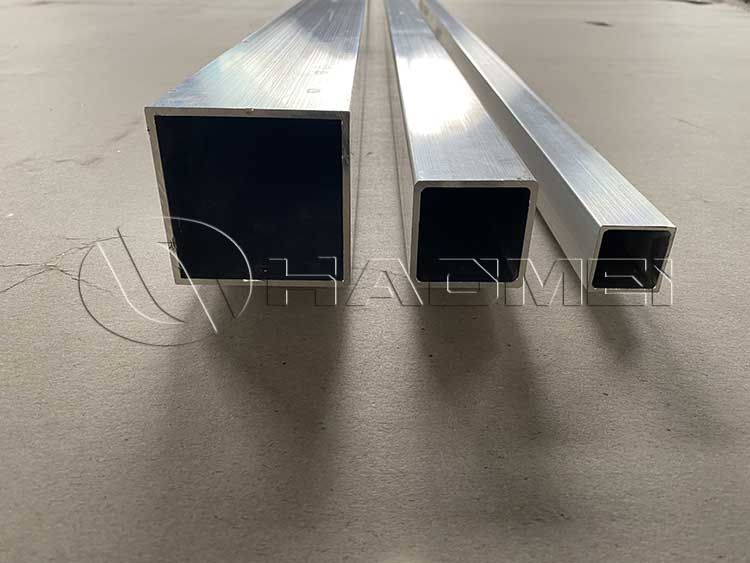Aluminum Tube and Aluminium Tube Connector
Marine aluminum tubes come in a wide variety of sizes and specifications to meet the needs of various systems. Common seamed aluminum tubes range in diameter from 4mm to 506mm, with wall thicknesses from 0.7mm to 50mm. These tubes are primarily made of 6063, 6061, and 6005. 22mm aluminum tube is a popular size. These tubes offer excellent weldability and moderate hardness, making them widely applicable.

Seamless aluminum tubes typically range in diameter from 8mm to 260mm, with wall thicknesses of 1mm to 25mm. They are often made of 2024 aluminum with high hardness. Rust-resistant aluminum tubes (5 series aluminum tubes, seamed), with diameters ranging from 10mm to 300mm and wall thicknesses ranging from 1mm to 30mm, are widely used in ships, cruise ships, motorboats, and other applications due to their excellent corrosion resistance.
Uses of aluminum tubes
Fluid transportation: During ship operation, aluminum tubes play a crucial role in transporting critical fluids such as fuel, lubricants, and compressed air. Ships are often exposed to humid and saline marine environments. The corrosion resistance of aluminum tubes effectively resists seawater erosion, preventing rust and corrosion, significantly extending the service life of the tubes and ensuring the stable operation of the ship's power and lubrication systems.
Hull structural aids: Some aluminum tubes contribute to the construction of the hull structure. 6063 and 6061T6 aluminum tubes, for example, are used in the manufacture of hull structures, decks, and cabins. The lightweight and high-strength characteristics of aluminum tubes ensure structural strength while reducing the overall weight of the ship, improving its load-carrying capacity and navigation efficiency.
Types of Aluminum pipe fittings
Aluminum pipe connectors
Flanges: Used to connect two pipes, maintaining coaxiality and facilitating disassembly and installation. It is one of the main aluminium tubing connectors.
Unions: Quickly connect and disconnect pipes, facilitating repairs and component replacement. They are often used in piping applications requiring frequent disassembly.
Ferrules: These utilize the clamping force of ferrules to seal and connect pipes, offering excellent sealing performance and are commonly used in piping systems requiring high sealing requirements.
Direction-changing accessories
Elbows are used to change the direction of pipes. Common types include 90-degree and 45-degree elbows. These allow pipes to adapt to complex internal ship layouts and optimize flow flow.
Pipe diameter changing accessories
Reducers: Connect pipes of different diameters. Available in concentric and eccentric reducers, these can be selected based on specific installation requirements to ensure smooth fluid transition.
Reducing Elbows: Change both the direction and diameter of a pipe, meeting specialized piping layout requirements.
Reducing Tees and Reducing Crosses: These allow pipes to branch while changing diameter, connecting three or four pipes of varying diameters.
Adding pipe branching accessories
Tees: Create a "Y"-shaped branch in a pipeline, allowing one fluid flow to split into two or combine two fluid flows into one. They are widely used in various ship piping systems.
Crosses: Create a "cross" shape and are used to branch pipelines in four directions, meeting complex pipe connection requirements.
Original Source:https://www.marinealu.com/a/aluminum-tube-and-aluminium-tube-connector.html
Tags: aluminum tube ,